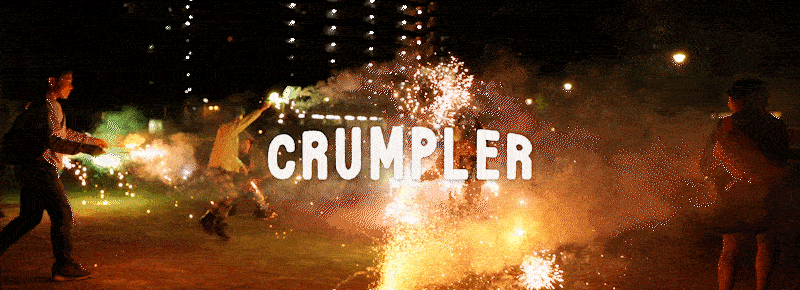TRIGGER WARNING: DISCUSSION OF DOMESTIC VIOLENCE
The phrase ‘having a domestic’. It is an Australianism that pervades backyard barbecues and group chats, to indicate that two people in a relationship are having an argument. You might have heard your father say it about your neighbours, or from a friend who is having a fight with their girlfriend. If I were to fathom a guess, you’ve probably heard it in a joking tone more often than a serious one.
Having a domestic means different things to different people, and the severity of the incident being referred to is not always simple to discern. The phrase can refer to verbal tiffs or domestic violence. Its universal usage presents a problem; it over-exaggerates small issues and trivialises major ones. Phrases like this pervade the discourse on violence, and make the topic more and more difficult to talk about candidly.
We are aware that the way violence is reported on is a disservice to the victims of violence. When Hannah Clarke and her children were murdered in a car fire in Brisbane, one of the first things that was reported on was the perpetrator’s short football stint with the Warriors. The fact that Hannah that had separated from him and told friends and police about her situation was added to the news reports far too late. Media organisations are responsible for how we hear about tragic acts of violence and often they miss the mark. However, we are responsible for how violence is spoken about and received in our communities, and our dismissive attitude is failing victims of violence.
Violence hides in our casual language, used every day without thought. When push comes to shove. Going ballistic. I’ll twist your arm. Went in with guns blazing. The old ball and chain. Being brutally honest but softening the blow. Phrases like these, as well as the phrase ‘having a domestic,’ don’t seem like they perpetuate violence. However, they casualise violence. These phrases take violence and bring it into the mainstream, make it feel like less than it is. A casualised attitude toward violence makes it more difficult to talk about. It makes it more difficult for violence to be taken seriously when it is brought up. I distinctly remember talking to a trusted adult about my family situation when I was in high school, and his response was that I would tough it out, and should roll with the punches because I would be moving out soon. That conversation, asking for help and advice in a violent situation, was met with violent language. It took me another three years to begin to speak about my situation again. I am certain that the teacher left the conversation thinking they had helped me. It is not easy to talk about violence. I know that first hand.
However, we need to be better.
We have lost 21 Australian women to violent homicides so far this year that we know of. Queensland police receive over 100 calls a day about domestic violence. Say those sentences out loud, feel them on your tongue, let the words fill the room you’re standing in. It’s a difficult number to hear, to think of as real people, to put a face next to each number. As these numbers climb in Australia, averaging out to over a woman a week, the discourse and conversations around violence against women remain stagnant.
It’s a difficult topic to bring up, it overwhelms breakfast chats and dinner speak, it struggles to be heard in hushed tones and crackles in the throat when raised through a microphone. We do not talk about violence because we, as a collective, are unable to acknowledge that the way we speak and act is complicit in allowing violent acts and diatribe to continue unchecked.
It is not only the words and phrases that we use that delegitimises acts of violence in our community. It is our attitude towards violence, the way we view it as something foreign, that also pulls conversations on the topic into a dangerous space.
There is a unit I took last semester, which I won’t identify, but any student who has taken it will remember this exercise. We the students were presented with a fictional client who wanted to help domestic violence victims and were asked to create a strong message that would help them. The answers that were regarded as correct were answers like this; You don’t have to live with violence, stand up, you can access help today. When I asked about a campaign that targets perpetrators over victims, I was told that campaigns that targeted victims and bystanders are more likely to be absorbed. As my tutor told me, perpetrators will not change or recognise themselves in a campaign like this. We moved on with the tutorial, and I sat in my chair, unsure how to feel. I do not blame the unit coordinator or tutor for using the example. However, as a survivor, the blasé attitude and connotation that perpetrators simply would not listen was another reminder of how we view violence as escapeable, not unsolvable.
We are in the twilight of Domestic and Family Violence Awareness Month. As we lose more and more victims, something has to give, and the beginning is with a conversation. However, we are incapable of talking about violence, or even listening, without desensitising and pacifying the topic. We need to be aware that our language and attitudes take violence and trivialise it, minimising the impact of violence so that we do not have to face the topic as what it is. Identify when the way you talk about violence hinders the overall conversation, take violent phrases out of your vernacular and stop someone when they say a couple is ‘having a domestic.’ Stop someone when they speak about violence as if there is nothing they can do.
As them why they think that way.
Our governments spends hundreds of millions of dollars on social media campaigns about violence, how to recognise it and what number to ring. However, in our culture, violence is entrenched in the way we view the world, to the point that the line on what is an isn’t violent is blurred beyond comprehension.
Ask yourself why.
When topics are difficult to talk about, it prohibits a conversation from beginning and enables a perpetrator to continue committing violent acts without confrontation. In order to begin speaking out about violence, we must remove the barriers that keep the stigma in place. Because, at present, the way we talk about violence is failing victims because we do not talk about violence at all.
Do not roll with the punches in conversations that discuss violence. Take action to disarm conversations that perpetuate it and create the building blocks that will make talking about violence and the systems that uphold it accessible.








